What Do Juncos Eat? 6 Typical Foods
Last Updated on
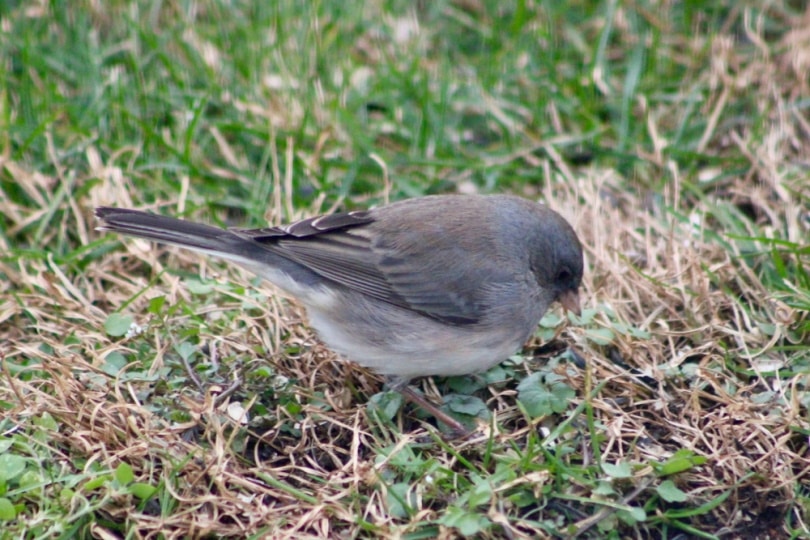
Ever wonder what juncos eat? These small, round, and flashy sparrows are known for flying around the forest floors of Canada and the western mountains before they flow south for the winter. Juncos can be easily identified with their short bodies and dark eyes.
Many also have dark feathers on their head and neck and lighter gray or white feathers on the lower part of their body. They can be found perched on tree branches or browsing forest floors looking for food. Their diet isn’t that much different than many other similar species. Let’s discuss it in more detail.

The 6 Foods That Juncos Eat
Juncos are primarily seedeaters, with various types of spring and winter seeds making up about 75% of their diet.
1. Sunflower Seeds
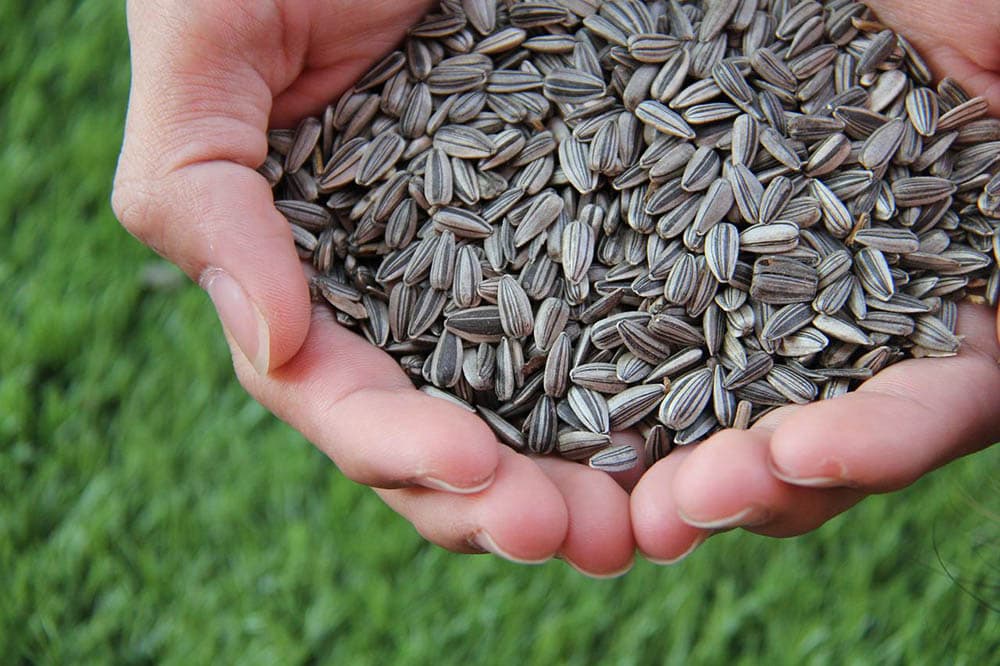
Sunflower seeds are a common seed that juncos eat. They can get these seeds naturally from their habitat. However, you can also buy many commercial bird seeds that contain sunflower seeds or some that are made exclusively of sunflower seeds.
2. Millet
A millet is a small, round grain that is primarily grown in Africa and Asia. Millet is another grain that is commonly found in commercial bird seed along with sunflower seeds and corn. But, a junco is not like to get millet from its natural habitat.
3. Wheat
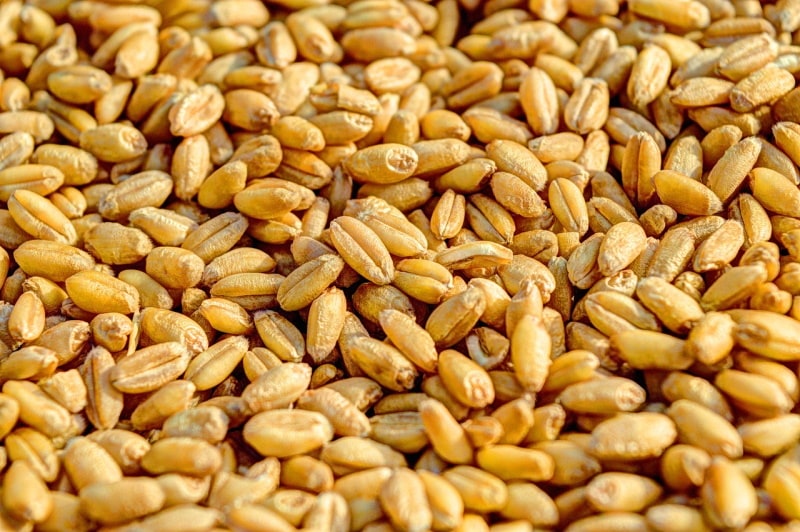
Wheat is another food source that juncos may eat in the wild. It’s also found in many bird seeds. Surprisingly, wheat is mostly used as a filler for birdseed and doesn’t provide much nutritional value for birds. Juncos likely don’t eat it as a primary food source.
4. Thistle Seeds
Juncos may also eat thistle seeds in the wild. You can buy thistle seeds, sometimes called Nyjer seeds, for your bird feeders. This type of birdseed is also a favorite of finches and can be used to attract more of them to your yard.
5. Peanuts
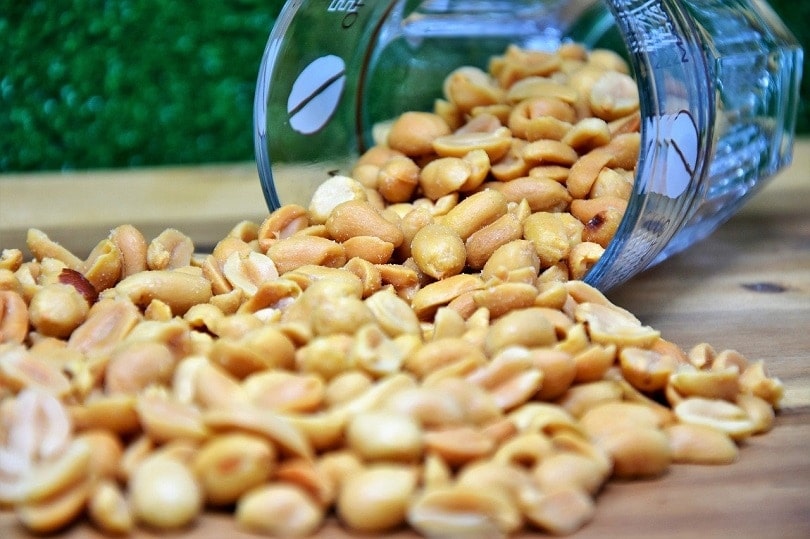
Juncos may not eat peanuts in the wild. However, adding peanuts to your bird feeders can be a great source of food for attracting juncos to your yard. Plus, peanuts can provide enrichment for the birds since they may have to crack them open to get the nut from inside.
6. Insects
Although juncos primarily eat seeds, they may also eat insects during the breeding season. Insects are also more abundant during the breeding season and can provide additional protein to juncos, which can also help create stronger eggs. Common insects that juncos eat include moths, wasps, beetles, caterpillars, and spiders.

Other Facts About Juncos
Habitat
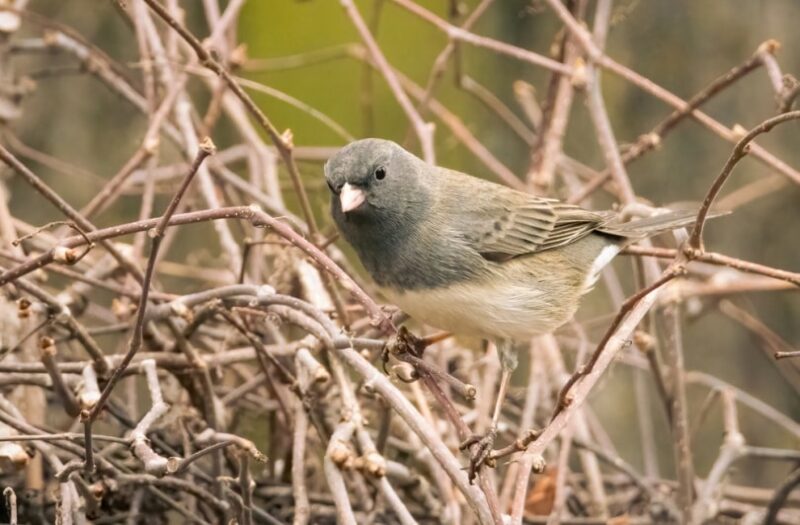
Juncos are found in many forests throughout North America and Canada during the summer and spring months. They can be found in coniferous forests, and they thrive in deciduous forests like aspen, cottonwood, and oak – places where food is abundant.
They take advantage of a greater variety of habitats during winter and migration, including open woodlands and fields, open parks, and large gardens. These areas are usually full of insects that can provide their nutrition during their breeding season.
Nesting
Female juncos select the site for their nest, which is usually in a depressed area of a tree or on the ground. Juncos can nest under or around buildings and some will nest above ground on horizontal branches, window frames, or hanging flower pots.
The nests are built by females using their beaks to join materials. Depending on the location of their construction, nests can vary in size and shape.
Ground nests may only receive a thin lining of pine needles or grasses. Some nests are built from twigs and leaves, while others may be made of moss and then covered with grasses and ferns. Rootlets, grass, fallen feathers, and pieces of moss can also be used.
The next take between 3-7 days to construct and are usually 3-5 inches in size. A junco will rarely reuse a nest and will simply build a new one when the old one becomes too worn or when their brood leaves the nest.
Behavior
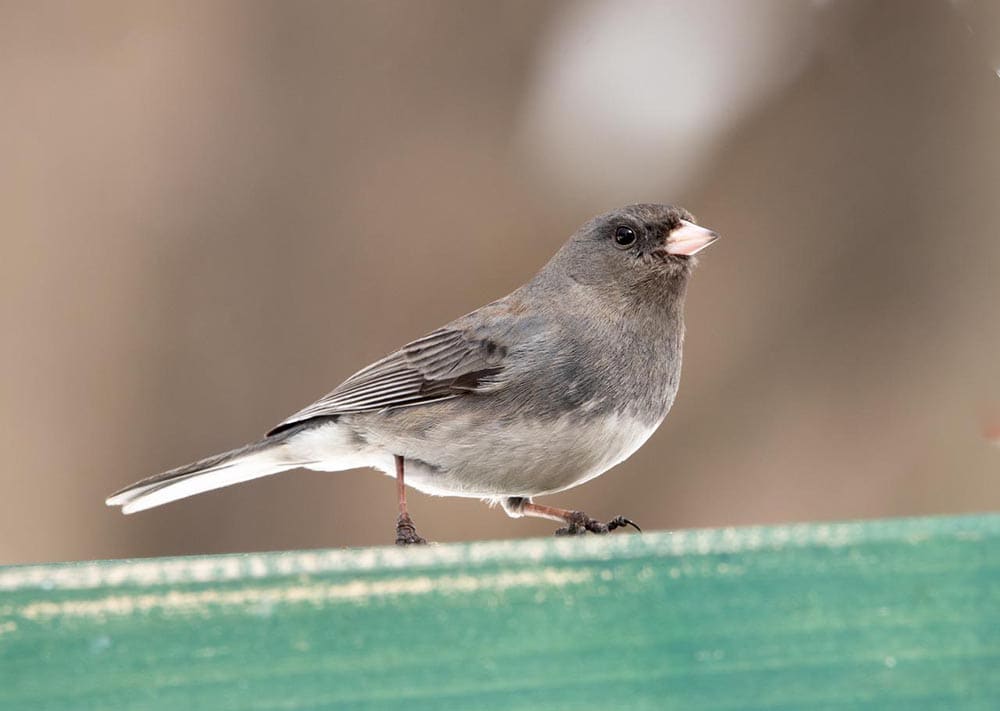
Juncos are essentially ground foragers, as they hop on the ground to pick up food, and sometimes find it lying low in the underbrush. But sometimes they fly high above the ground to capture insects from tree trunks.
They flap their wings continuously, lifting their tails to flash the white outer feathers. This makes flight very easy and allows them to maneuver through the tangled environment.
In summer months, male juncos are fairly territorial (which isn’t abnormal for birds) and chase away intruders with fast flights, often accompanied by excited calls and notes. Interestingly, male juncos will fan their wings or flick open their tails to court females. They’ll hop up and down and pick up nest material or moss to impress potential mates.
Juncos can form large winter flocks for protection, and if their wintering areas overlap, you might find multiple subspecies within a single flock. These small birds forage alongside bluebirds and sparrows. Juncos are known to have a flock hierarchy, or pecking order when traveling in large groups. Early arrivals are more likely to be ranked higher than later ones.

Attracting Juncos to Your Backyard
Provide Them with Food

As mentioned previously, juncos typically eat seeds, though they will also eat fruit and small insects as well. To attract these beautiful birds to your backyard, you’ll simply need to supply them with the foods that they love:
- Hulled sunflower seeds
- Millet
- Black oil sunflower seeds
- Peanuts
- Safflower seeds
- Nyjer
- Cracked corn
That being stated, these birds will eat what you have scattered on the ground, especially if they’ve missed a few meals or are looking for food for their broods. Many birds will also hop on your feeder.
Plant Native Plants
Many birds, including the dark-eyed juncos, depend on seeds from grasses and other wild plants for their substance in the autumn and spring when insects are scarce. Native plants are ideal as they don’t need special care to grow and produce seeds.
You can plant seeds if you have wildland on your property. Note that many non-native plants require toxic pesticides and fertilizers that can cause bird death, so these may not be ideal. Seedy plants such as Sunflowers, Globe Thistle, Pearl Millet, and Zinnias are a good place to start.
Make Sure to Have Water Available

All birds require water to drink or bathe in, and juncos are no different. Installing a small bird bath is a great way to attract these wild birds if there is no natural water source nearby. If you have a feeder, consider adding a fountain to the top so the birds can eat and take a sip or clean their feathers.
Spread Seeds on the Ground
Juncos will happily eat your feeder food right off of the ground. These birds are commonly referred to as “foraging” birds because they’ll hop around and grab a meal’s worth of seeds and fruit from the ground. So don’t worry about picking up spilled seeds, the Juncos will happily eat them fairly quickly.
Keep Your Cat Away
Although cats are lovely and great pets, it’s important to remember that they are primary predators of birds, and will quickly chase after and kill birds that they find hanging around your backyard. Even the sweetest and loving kitties can have a natural instinct to hunt birds.
And if your backyard is frequented by feral cats, you may want to put a fence or other structure to prevent them from hanging around your bird feeder. You can use a non-toxic method to deter feral cats, such as scattering fresh orange and lemon peels around the area.

Final Thoughts
Juncos primarily eat seeds for their diet. However, during breeding season these birds are known to also eat insects including caterpillars, insects, spiders, and wasps. If you live in the Northern or Midwestern part of the US, you may see a junco in your backyard or while walking along a hiking trail.
These round-bodied birds are pretty easy to spot, and you can easily attract them to your backyard by planting their favorite foods which include seeds, fruit, and millet.
Featured Image Credit: Jaclyn Vernace, Shutterstock
About the Author Robert Sparks
Robert’s obsession with all things optical started early in life, when his optician father would bring home prototypes for Robert to play with. Nowadays, Robert is dedicated to helping others find the right optics for their needs. His hobbies include astronomy, astrophysics, and model building. Originally from Newark, NJ, he resides in Santa Fe, New Mexico, where the nighttime skies are filled with glittering stars.
Related Articles:
10 Types of Hummingbirds in Arkansas (With Pictures)
8 Types of Hummingbirds in Nebraska (With Pictures)
5 Types of Hummingbirds in Idaho (With Pictures)
3 Types of Hummingbirds in Mississippi (With Pictures)
8 Types of Hummingbirds in Kansas (With Pictures)
5 Types of Hummingbirds in West Virginia (With Pictures)
5 Types of Hummingbirds in Ohio (With Pictures)
Where Do Nuthatches Nest? Nuthatch Nesting Habits Explained
